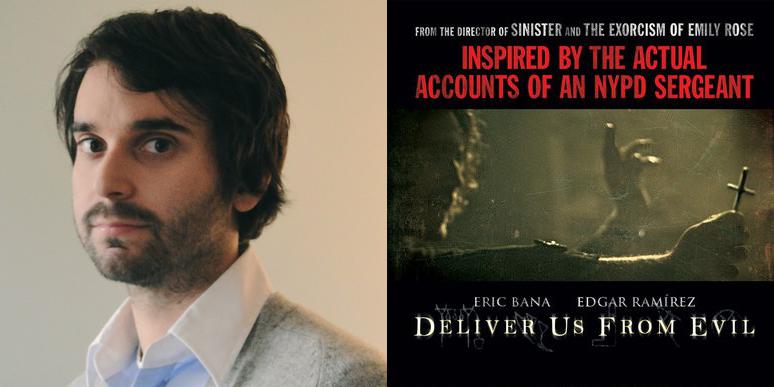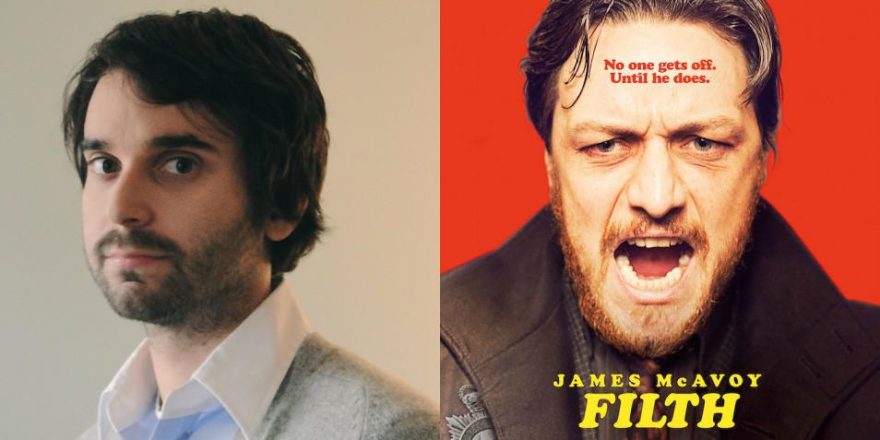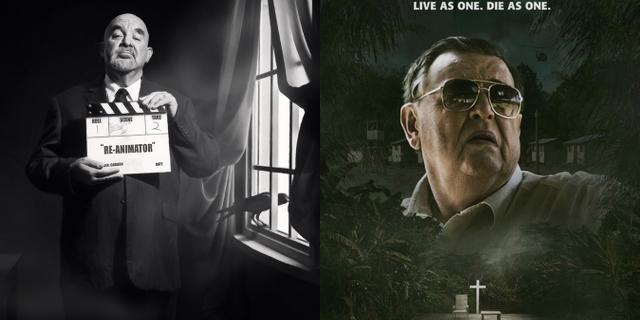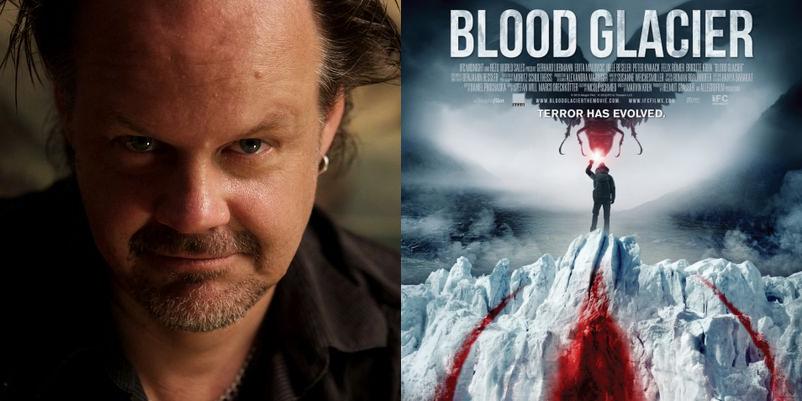“From the director of Sinister.” Sold. Scott Derrickson’s Sinister was not only one of my favorite films of 2012, I believe it to be a modern masterpiece of horror. I’d say it is my “favorite horror film since [x]” but I can’t even remember the last time a horror film so immediately enshrined itself in the canon prior to Sinister. The film was a perfect balancing act of, in one way or another, every trope of horror cinema: boogeyman, found footage, true crime, haunted house, slasher, possession. The human element in Sinister was excellently relatable: watching Ethan Hawke’s true-crime writer jeopardize his sanity and his family’s safety to push his work further, his obsessions unravel and the threat becomes more real and terrifying.
Much of the dread in Sinister come from the handful of moments when Derrickson, from the script he co-wrote with C. Robert Cargill, identifies Hawke’s Ellison Oswalt with the audience by placing him in front of retrieved Super 8mm films showing various grisly murders. By aligning Ellison with the movie’s viewers, as he sits, watches, and waits for an eventual moment of terror, Derrickson made a horror film fundamentally about the experience of being scared by looking at something that you cannot avert your eyes from but cannot comfortably watch.
This plot device recurs in Derrickson’s new film, Deliver Us From Evil, which stars Eric Bana as a Bronx cop named Ralph Sarchie and is based upon a book by the real Ralph Sarchie about his explorations into demonology. Bana’s Sarchie comes to discover the presence of evil in the world when some Iraq veterans (and one of their wives) begin to show violent signs of the inexplicable. Eventually, Bana is shown security footage showing the wife committing an ostensibly random act of attempted infanticide, only to discover that things are even worse than they seem. There are a few weak “gotcha” moments when Bana, and we in the theater, lean in close to the CCTV footage, only to have a startling flash of something accompanied by a loud screeching noise send us jumping back. It’s basically the oldest trick in the book, and Sinister was wise to ground its found-footage elements in practical 8mm films containing no sound, accompanied by a droning hum. There, the relative silence was more discomforting than any sudden loud noise. Perhaps it is a commentary on this sort of scare that nobody else watching the footage ever sees or hears the things that Bana and also the audience do. This doesn’t lessen the appeal of watching Bana, like Hawke, slowly unravel as he studies these horrific images for clues as to what is really happening.
Deliver Us From Evil looks like one of the masterful collaborations between Alan J. Pakula and cinematographer Gordon Willis. The film (shot by Scott Kevan) is impossibly, admirably dark. I can’t remember the last time I saw a new release that contained so much black. It’s not only when things are meant to be “creepy” but just generally, all the time. Bana’s face is usually half pitch-black, and his conferences with Mendoza (Édgar Ramírez), an absurdly handsome priest who becomes his ally, make use of shadow and very, very fleeting light in minimal and beautiful ways.
Sarchie goes from dark precinct to his dark home to dark nights at the Bronx Zoo (an excellent deployment of an iconic location that also recalls Pakula’s penchant for dramatizing the normal), talking to his partner Butler (Joel McHale), breaking up domestic disturbances that seem a bit off, and generally trying to make sense of the unexplained element connecting a series of crimes. For a while, things don’t play out like a horror movie, but instead a procedural where the crimes are exceptionally grisly and involve people biting one another and speaking Latin.
Much as Sinister was more a film about a self-centered writer and the misery his family goes through, Deliver Us From Evil is less a possession or exorcism movie than a drama about the unexplained creeping in to the everyday and upsetting the status quo in blue-collar Bronx, in this sense not unlike Clive Barker’s urban horror-fantasies. The film’s outer borough sense of New York bleakness suggests what Pakula’s The Devil’s Own would be if Brad Pitt weren’t an I.R.A. radical but a Satan-worshipping conjuror of evil.
Deliver Us From Evil has one element that I felt sets it apart from other exorcism movies with exorcism scenes, and it isn’t the fairly familiar-feeling ritual itself, though Sean Harris (Ian Curtis from 24 Hour Party People) is excellently creepy as the haunted vet whose body has become a temple of evil. And even though we’ve seen it in many movies from The Exorcist onward, I still love anything that suggests demons come to America via some mystery in the desert. The discovery of some cursed cave during the prologue had me already very satisfied with this film’s particular evil, even if it wasn’t unfamiliar. But what Deliver Us From Evil does that is very unique is suggesting that, unlike other films where a specific person is either targeted by a demon for possession or arbitrarily chosen as the host, anybody is susceptible.
I won’t ruin the explanation for how the individual subjects come to be under the control of evil, but I will say that it is reminiscent of Pakula’s The Parallax View in that ordinary people can be driven to act against their will if exposed or subjected to the proper imagery or conditioning. It is a great twist that somewhat grounds the film’s final act in the realism meticulously established. Another nice treat here is a flashback sequence that either was actually shot on grainy 16mm or is at least a clever recreation of it. For a few moments, we leave the sturdy framing and lighting in favor of a scene resembling a handheld, washed-out grindhouse New York cop vigilante film. Much like the Super 8mm moments in Sinister, Derrickson’s interplay of celluloid-driven cinematic tropes shows his respect for and adherence to the history of the genre and all its variations.
The guy has chops, and has quickly become a filmmaker whose name alone is enough to get me to the theater. His next film has been announced as Marvel’s Doctor Strange, which was encouraging before I saw Deliver Us From Evil but now is even more so. Hopefully that film, another New York story about a man driven into the realms of the unexplained and illogical (at least in the comics), will resemble this one in aesthetic and style. Deliver Us From Evil is stronger than this year’s other horror films, such asOculus and The Quiet Ones, though it’s not likely to become the sequel-spawning perennial favorite that Sinister already is. But the fact that Derrickson has yet again crafted long stretches of tension, mostly based not on gimmicks or tricks but on skillful deployment of cinematic craft, also makes this film a wonderful exercise in letting a horrifying plot slowly unravel before the viewer just as it does for its protagonist.







